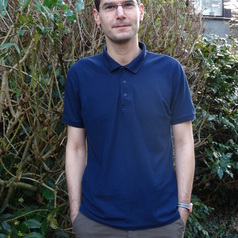Gang culture, social media, drug-market violence, funding cuts to policing and youth clubs, and poverty and social inequality, have all been blamed for the current knife crime “epidemic” in London.
More recently, however, it’s UK drill, a new black British music genre, that has been accused of promoting gun and knife crime, much like UK grime and garage before it.
In the last two months 30 YouTube videos of drill music have been removed by the police, followed by Criminal Behaviour Orders issued against drill artists. Such responses may seem justified especially in the light of some fatal incidents that have been linked to drill music. But it remains difficult to prove a direct link between drill lyrics and actual murder(s) beyond a certain degree of speculation and interpretation.
Controversial crackdown
Designing crime prevention strategies based on decoding lyrics seems ill-advised to say the least. The commissioner of the Metropolitan Police, however, has publicly defended such responses. As has the Met’s gang crime chief, who also supported the revisiting of the Terrorism Act to pursue “drillers” as terror suspects.
The use of the act allows the police to bring convictions against people featured in drill videos without any proof that the targeted music videos are linked to specific acts of violence. The government’s Serious Violence Strategy, also adopts a similar stance.
These include “childhood trauma and undiagnosed and untreated mental health issues”. But also, “inadequate state provision, deficient parental support, poverty and social inequality”. This is why the report’s authors have called for an approach modelled after Scotland’s Violence Reduction Unit, which champions a public health approach to youth violence.
Racist responses?
Punitive responses to a public health emergency are clearly counterproductive. As is the reluctance of the Youth Violence Commission to treat the issue as a racial justice priority – given that discriminatory responses cannot be separated from the mentality that informs them. Popular “crime-fighting” measures, such as arbitrary stops and searches and police gang lists, for example, routinely profile young black people who are logged as suspects in police databases on the flimsiest of evidence.
The same goes for other anti-gang operations such as Trident, Shield and Domain and event risk assessment forms of policing, which have been declared racially discriminatory by academics, human rights groups, the UN, Amnesty International, and the London mayor.
The 2017 Lammy Review paints a similar picture although it curiously excluded policing from its remit. Yet in that year five young black men died in police custody, and Avon and Somerset Police police was accused of institutional racism by the Safer Bristol Partnership Report, following the mishandling of the Bijan Ebrahimi murder.
Recent figures by the Independent Office for Police Conduct also show a higher proportion of black people dying in police custody after the use of force or restraint. Half a century after the term was used in the Scarman and MacPherson reports in response to the 1981 Brixton Riots and in the Stephen Lawrence murder, institutional racism within the police seems to be in rude health.
Fighting fire with ire?
Seven years have passed since the fatal police shooting of Mark Duggan that sparked the 2011 riots. Yet British society does not seem to have recovered from or discovered the reality of police racism. Many were alarmed during England’s “summer of disorder”, which echoed the 1970s and 1980s when discriminatory policing sparked disturbances in Notting Hill, Brixton and elsewhere. However, much of this shock should not occasion surprise. As my research shows, the policing of black British culture claims a long history.
As does the stigmatisation, the demonisation, and criminalisation of young black Britons. This is the reality of “post-racial” or “colour-blind” times. And it should be unmasked to reveal the racism that refuses to be seen. This is why it might take another Black Lives Matter moment to wake up to police racism, and recognise that when policing is part of the problem it can’t also be the solution to violent crime.



 A new wave of wearable devices will collect a mountain on information on us
A new wave of wearable devices will collect a mountain on information on us  Why doesn’t my digital music feel like ‘mine’? Three ways digital possessions reduce our sense of ownership
Why doesn’t my digital music feel like ‘mine’? Three ways digital possessions reduce our sense of ownership  Will global oil supply be at risk if Iran and Israel pull the Middle East into war?
Will global oil supply be at risk if Iran and Israel pull the Middle East into war?  An Israeli attack on Iran’s nuclear weapons programme is unlikely – here’s why
An Israeli attack on Iran’s nuclear weapons programme is unlikely – here’s why  Immigrant women suffer financially for taking maternity leave: 4 ways Canada can improve
Immigrant women suffer financially for taking maternity leave: 4 ways Canada can improve  How ‘social financing’ could help fund higher education for under-represented students
How ‘social financing’ could help fund higher education for under-represented students  Fuel poverty in England is probably 2.5 times higher than government statistics show
Fuel poverty in England is probably 2.5 times higher than government statistics show  Do you have 7,513 unread emails in your inbox? Research suggests that’s unwise
Do you have 7,513 unread emails in your inbox? Research suggests that’s unwise  EU enlargement: What does the future hold?
EU enlargement: What does the future hold?  Is attachment theory actually important for romantic relationships?
Is attachment theory actually important for romantic relationships?  The yen plunges to 34-year low despite interest rate hike
The yen plunges to 34-year low despite interest rate hike 































